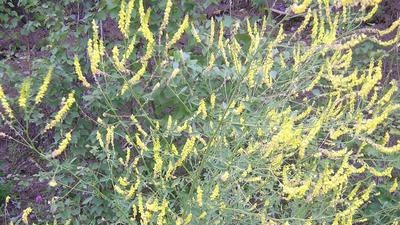|
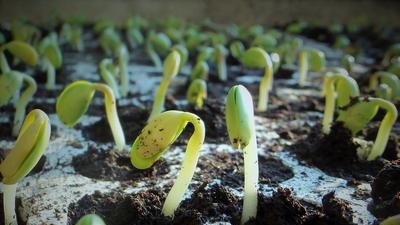 The writer Wanda Vasilevskaya, while traveling in China, ended up in a monastery with Buddhists. When it was time for dinner, she discovered that the monks' food was not at all vegetarian, as it should be according to the charter, but the most common, meat one. She was served: fried goose, sparrows with cabbage, fried already, and chicken with pasta and mushrooms. The writer Wanda Vasilevskaya, while traveling in China, ended up in a monastery with Buddhists. When it was time for dinner, she discovered that the monks' food was not at all vegetarian, as it should be according to the charter, but the most common, meat one. She was served: fried goose, sparrows with cabbage, fried already, and chicken with pasta and mushrooms.
How surprised the guest was when she found out that none of the offered dishes contained a single gram of meat! AND goose, and chicken, and sparrows, and already made from ... soy. Maybe she would not be so surprised if she remembered that long before the war, soy had triumphantly passed through our country in the form of "Caucasian" sweets. They were then called simply soy. We boys fell in love with them immediately. They were like chocolate and so cheap! At school we were told that not only candy can be made from soy, but a thousand other things.
However, the path of the candy plant around the planet did not begin at all triumphantly. At first they didn't even know what to call it. Karl Linnaeus himself, even he hesitated. First I assigned one name, then changed it to another. They came up with names after Linnaeus. American agronomist K. Piper laughed: "The whole story with the name of soybeans!" And only our Russian botanist I. Maksimovich finally figured out how to properly perpetuate the plant. And he called the cultivated soybean bristly (there are many more wild species).
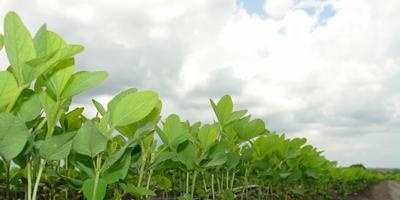
As an observant person, Maksimovich noticed that soybeans are very similar to beans... I had to find an easy way to tell them apart. Maksimovich found bristles. All leaves and stems are densely covered with soybean bristles. It feels like sandpaper to the touch. The bristles are very important for the plant. Protect against pests - potato leafhoppers. Breeders did not disregard this and try to breed bristly varieties. The leafhopper does not touch rough leaves.
They began to look for where the extraordinary creature came from. We turned to history. Found the name of the legendary physician Shen Nun. The founder of agriculture in China. He was the first to mention soy in his writings three thousand years BC. Then it turned out that Shen Nong was not there. He was simply invented, because there is zero specific information about him! But soy has existed - at least in everyday life - for several centuries. In China and neighboring countries, they made milk, cottage cheese and butter from it, and thus did without an ordinary cow.
As for the rest of the world, he hardly knew about soy. The only one who got interested in it was our explorer Vasily Poyarkov, who visited the East. His "Tales" - travel notes - was published in Holland in the middle of the 17th century and handed over to the archive. They remembered about soy more than two hundred years later, when in 1873 the World Exhibition opened in Vienna. Here the Europeans first saw this plant. We learned that you can make an incomparable sauce from soy ("soy" in translation means sauce), soap and even coffee. They began to sow. But the heat-loving creature in Europe was not lucky. There weren't enough warm days. And if you managed to grow beans, then boiling them was a sheer punishment.

Ten times harder than peas. If you could boil it down, then you didn't want to. An unusual taste interfered.
In general, Europe rejected the Asian alien. And only one person did not lose faith in him - our Russian agronomist V. Ovsinsky. He was known as an extraordinary man. Always invented something. I rejected moldboard plowing and came up with "zero" tillage, which is very useful these days. Having learned about the failures with soybeans, he realized that it was all about early ripening varieties. He made a calculation and found that in Ukraine only soybeans that will fit in a hundred days can ripen. From sowing to harvest. He immediately rushed to China and after a long search found the material he needed. When he returned, he created an early 100-day union. She had brown seeds, and she fit in the right interval. True, it gave little grain.Then Ovsinsky created another variety - with black seeds. Black soybeans yielded more crops, but required an extra ten days.
With the light hand of Ovsinsky, the candy grass has taken root in Russia. In Soviet times, it occupied hundreds of thousands of hectares in the Far East. Observing the truth, we must admit that in Ukraine, where he worked as an agronomist, soybeans have not yet gone widely, although a lot of work has been done. At one time, even before the revolution, the capricious legume was taken under its wing by the "Rural Owner". He tried in every possible way to promote the culture of soybeans and began to receive a lot of letters to which his observers could not always correctly answer.
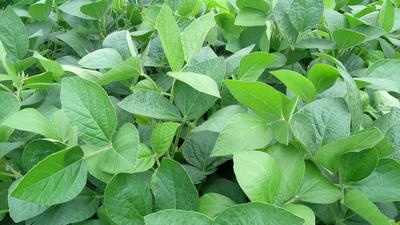
During the phenomenal drought of 1899, when the sunflower, which was accustomed to lack of moisture, was barely alive, the moisture-loving soybeans gave an excellent harvest. Puzzled by such a turn of affairs, the scientific consultant of the magazine D. Fedorov suggested that the peasants give up sowing sunflowers and take up the milk-curd grass. And he set an example. I sowed a large wedge of soybeans next to a sunflower field.
The next year, 1900, turned out to be merciful to the grain growers. Mild winter, warm spring. Rainy summer. Soybeans have been sown a lot. But as if ironically, in this blessed year, everything turned out the opposite. The sunflower gave an excellent harvest. Soy - seven times less! Indignant letters poured into the editorial office of the magazine. The consultant D. Fedorov, who had barely collected the seeds himself, did not know what to answer the readers.
The task turned out to be intricate. Paradox! Moisture-loving soybeans make a profit in a dry year, and a loss in a wet year! A drought tolerant sunflower behaves the other way around. Fedorov goes over in his memory all the details of the weather in 1900 and finally understands what is the matter. Summer, in general, turned out to be successful. But May was dry. The drought lasted for almost 30 days. Sow earlier - there would be no trouble. But they were too late. And the drought did its job. She delayed not only the soybeans, but also the sunflower. He seemed to deliberately slow down growth. And when the June showers watered the land, he rushed to catch up.
And he made up. Soy couldn't.
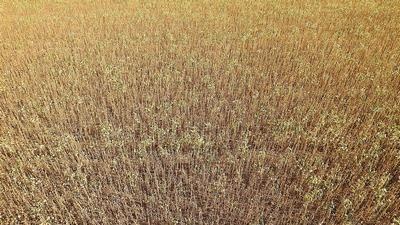
The year 1929 was especially memorable in all these perturbations. At the beginning of summer, there was a drought again. And again everything perished: potatoes, beets, corn, sunflower... One soybeans, as if to spite the merciless sun, flaunted and sparkled with all its bristles. And the stronger, the more painful the drought became, the brighter the defiant festive outfit of milky grass seemed against the background of general decay and destruction.
- Victory! - shouted the agronomists. - Soybeans are the most drought-resistant crop.
“No, not quite a victory yet,” objected the breeder A. Derzhavin, who closely followed the behavior of the bristly creature.
And he was right. Everything went well until it was time to give birth. Here the soybeans seemed to stumble.
Its flowers have blossomed, but the festive attire has faded. And when the first beans were tied, things took a very bad turn. Soybeans began to age before our eyes. Where did the former beauty go!
This time Derzhavin knew the reason for the change. He had numbers.
At the beginning of its life, milk grass spends half a glass of water per day to evaporate. And from flowering to grain filling - three times more. One and a half glasses a day for one plant!
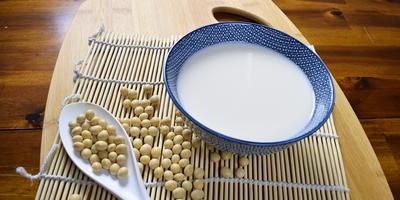
So, in the arid steppes of Ukraine, there is a lot of trouble with soybeans. The Far East is different. It was from here, after the Russo-Japanese War, that the Americans removed seeds to plant in their southern states. The climate of those places perfectly suited the moisture-loving creature. At first, soybeans were bred a little, then more and more. Finally, they overtook the main soybean producer - China. It took a lot of land. And the forests were on fire and the cottage cheese turns out. Only they ferment it not with sour cream, but ... with slaked lime. Or plaster. When curdled, rinse with clean water. Soy milk is considered medicinal. It seems to replace the female and can be suitable even for nursing babies.
It is wonderful that none of the crops that man grows has stepped forward these days as quickly as soybeans! Over the past 10 years, fees on the planet have almost doubled.Africa, on the other hand, quadrupled its harvest in the same period, and South America in the Mississippi River basin. In her delta. They freed up space for a profitable culture. We were in a hurry. They did not spare valuable breeds. Neither oak, nor ash, nor tulip tree. The American Forestry Journal summed up the sad conclusion: over the past 30 years, almost half of the forests have been razed to the ground. Only a third of the timber went into business. The rest was just burned ...
The Americans were so carried away by soy that they began to make fantastic predictions. Nutritionist at the University of Arizona W. Hale calculated that soybeans would provide an opportunity to feed not 214 million people in the United States, as it was then, but 15 times more - three and a half billion! To do this, everyone will be asked to eat 12 pounds of beans per day. And as an addition a pound and a half of bread, a little vitamins and mineral salts.
It's hard to believe, of course, but who knows? After all, beans are so easy to turn into candy, goose, chicken and even sparrows! And the milk from them resembles cow's milk so much that it even “runs away”, foaming over high heat. It is prepared very simply. Soak for a day in clean water. They push.
Boil and filter. From milk 10 times! But milk herb also has many problems. How to deal with pests, how to fertilize, how to use the right light?
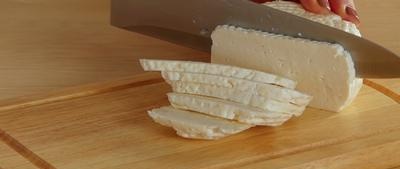
Pests? We tried to fight with chemistry. Matilparathion and metamil were used against the corn scoop. University of Illinois staff checked what happened. Hordes of scoops began to decline, but after three weeks the number of caterpillars was three times more than where they had not been treated with anything. The beneficial parasites that controlled the scoop were more affected by the chemicals. And soybeans - it defends itself, it's not for nothing that it is bristly!
Before fertilizing, you also need to think. In the same state of Illinois, several bags of nitrogen fertilizer were scattered on the field and did not receive an increase in yield. Then the rate was increased and poured four times more. And again the same picture. Here the experimenters risked giving quite a lot of nitrogen. Plants responded to this not with an increase, but with a decrease. The growth has decreased and the harvest has decreased. Only good wasted in vain. After all, soybeans have their own nitrogen supply - nodule bacteria. The nitrogen that they get is more valuable for plants than the free one brought.
And in Minnesota, the same technique gave an increase in the yield. Apparently, the soil there was worse. In poor soils, fertilization has proven to be beneficial.
Finally, light. How do you arrange the plants in the field so that they make better use of the sunbeam? Agronomist I. Belikov in the Far East found out that soybeans will then collect completely incident light if the area of each plant has the shape of an elongated rectangle.
A. Smirnov. Tops and roots
|
 The writer Wanda Vasilevskaya, while traveling in China, ended up in a monastery with Buddhists. When it was time for dinner, she discovered that the monks' food was not at all vegetarian, as it should be according to the charter, but the most common, meat one. She was served: fried goose, sparrows with cabbage, fried already, and chicken with pasta and mushrooms.
The writer Wanda Vasilevskaya, while traveling in China, ended up in a monastery with Buddhists. When it was time for dinner, she discovered that the monks' food was not at all vegetarian, as it should be according to the charter, but the most common, meat one. She was served: fried goose, sparrows with cabbage, fried already, and chicken with pasta and mushrooms.
































